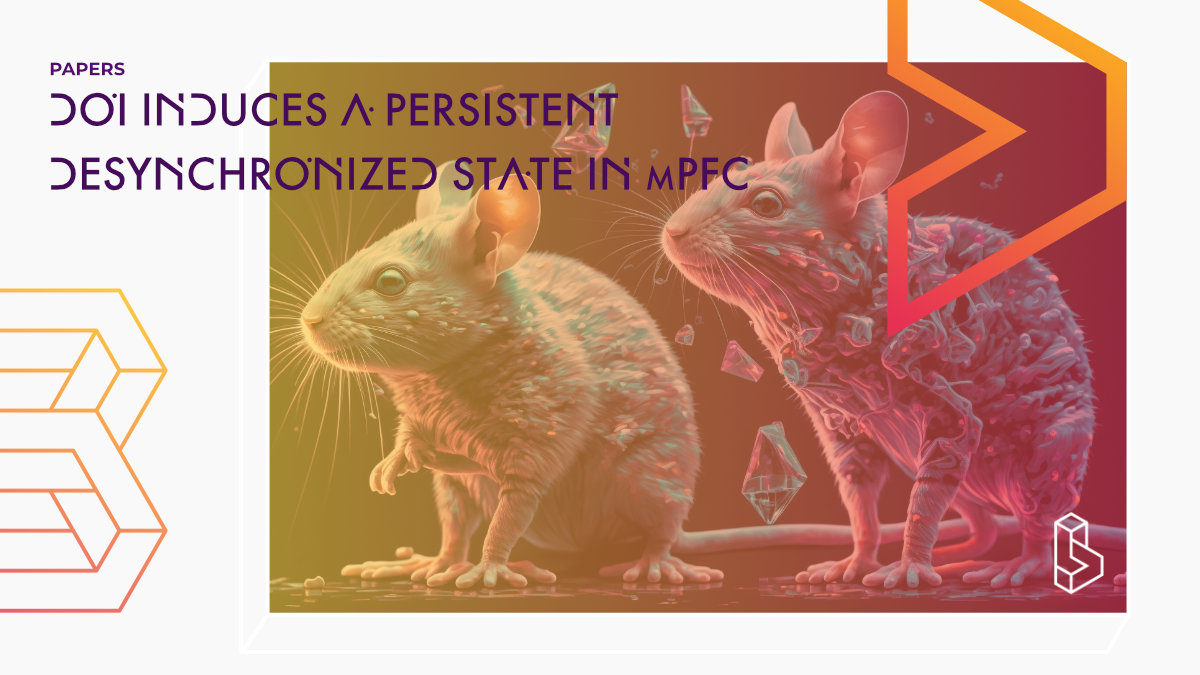This pre-print (2023) rodent study found that the psychedelic DOI caused changes in brain activity (specifically the mPFC) that differed from normal patterns. During rest, when brain activity is usually synchronized, the drug causes a decrease in synchronization and an increase in gamma activity.
Abstract
“Administration or consumption of classic psychedelics (CPs) leads to profound changes in experience which are often described as highly novel and meaningful. They have shown substantial promise in treating depressive symptoms and may be therapeutic in other situations. Although research suggests that the therapeutic response is correlated with the intensity of the experience, the neural circuit basis for the alterations in experience caused by CPs requires further study. The medial prefrontal cortex (mPFC), where CPs have been shown to induce rapid, 5-HT2A receptor-dependent structural and neurophysiological changes, is believed to be a key site of action. To investigate the acute neural circuit changes induced by CPs, we recorded single neurons and local field potentials in the mPFC of freely behaving mice after administration of the 5-HT2A/2C receptor-selective CP, 2,5-Dimethoxy-4-iodoamphetamine (DOI). We segregated recordings into active and rest periods in order to examine cortical activity during desynchronized (active) and synchronized (rest) states. We found that DOI induced a robust decrease in low frequency power and decoupled rhythmic activity from neural population dynamics when animals were at rest, attenuating the usual synchronization that occurs during less active behavioral states. DOI also increased broadband gamma power and suppressed activity in fast-spiking neurons in both active and rest periods. Together, these results show that the CP DOI induces persistent desynchronization in mPFC, including during rest when mPFC typically exhibits more synchronized activity. This shift in cortical dynamics may in part underlie the longer-lasting effects of CPs on plasticity, and may be critical to their therapeutic properties.”
Authors: Randall Olson, Lowell Bartlett, Alex Sonneborn, Zachary Bretton-Granatoor, Ayesha Firdous, Alexander Harris & Atheir Abbas
Summary of The classic psychedelic DOI induces a persistent desynchronized state in medial prefrontal cortex
Classic psychedelics induce profound and multifaceted effects on experience after consumption, and are often described as “mystical”. They have been shown to alleviate depressive symptomatology in a dose-dependent manner.
Classic psychedelics (CPs) exert their main psychoactive effects through interaction with Gq-coupled 5-HT2A receptors, which are enriched in the medial prefrontal cortex. These receptors are activated by both psychedelics and non-psychedelic 5-HT2AR agonists, and induce a diverse range of downstream molecular actions. Previous ex vivo electrophysiology studies in the mPFC have identified complex acute effects of 5-HT2AR activation on different neuron subtypes, including increased frequency and amplitude of spontaneous and evoked inhibitory and excitatory postsynaptic currents. In the dorsal anterior cingulate subregion of the mPFC, 5-HT2A/2C-selective CP DOI altered firing rate and decreased gamma power. In the prelimbic and infralimbic cortices, CPs produced the opposite effect on gamma power.
Find this paper
The classic psychedelic DOI induces a persistent desynchronized state in medial prefrontal cortex
https://doi.org/10.1101/2023.02.26.529963
Open Access | Google Scholar | Backup | 🕊

